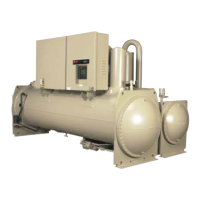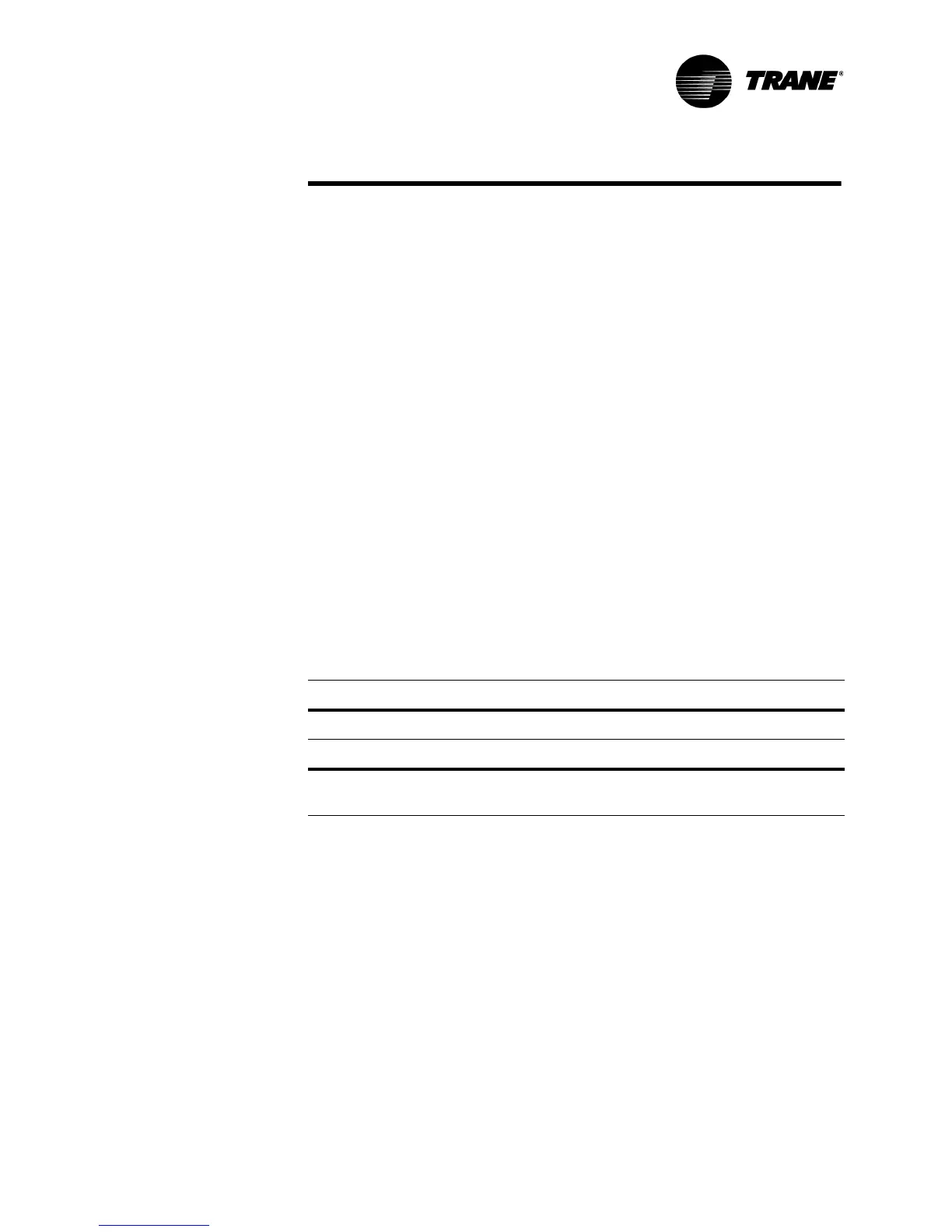RTHD-SVX01D-EN 137
Maintenance Procedures
All of the materials used in the external circulation system, the quantity of the
solution, the duration of the cleaning period, and any required safety precau-
tions should be approved by the company furnishing the materials or perform-
ing the cleaning.
NOTE: Chemical tube cleaning should always be followed by mechanical
tube cleaning.
Cleaning the Evaporator
Since the evaporator is typically part of a closed circuit, it does not accumu-
late appreciable amounts of scale or sludge. However, if cleaning is deemed
necessary, use the same cleaning methods described for the condenser
tubes.
Compressor Oil
CAUTION
Equipment Damage!
To prevent oil sump heater burnout, open the unit main power
disconnect switch before removing oil from the compressor.
Trane Polyolester Oil is the approved oil for the RTHD units. Polyolester oil is
extremely hygroscopic meaning it readily attracts moisture. The oil can not be
stored in plastic containers due to the hygroscopic properties. As with min-
eral oil, if water is in the system it will react with the oil to form acids. Use
Table 31 to determine the acceptability of the oil.
NOTE: Note: Use an oil transfer pump to change the oil regardless of chiller
pressure.
Oil Sump Level Check
Running the chiller at minimum load is the best for the quickest return of oil to
the separator and sump. The machine still needs to sit for approximately 30
minutes before the level is taken. At minimum load, the discharge superheat
should be highest. The more heat in the oil as it lays in the sump, the more
refrigerant will boil off in the sump and leave more concentrated oil.
The oil level in the oil sump can be measured to give an indication of the sys-
tem oil charge. Follow the procedures below to measure the level.
1. Run the unit fully unloaded for approximately 20 minutes.
2. Cycle the compressor off line.
Table 31 POE Oil Properties
Description Acceptable Levels
Moisture content less than 300 ppm
Acid Level less than 0.5 TAN (mg KOH/g)
Mineral oil used in the RTHA and RTHB units had different acceptable levels (<
50 ppm of moisture and < 0.05 mg KOH/g)

